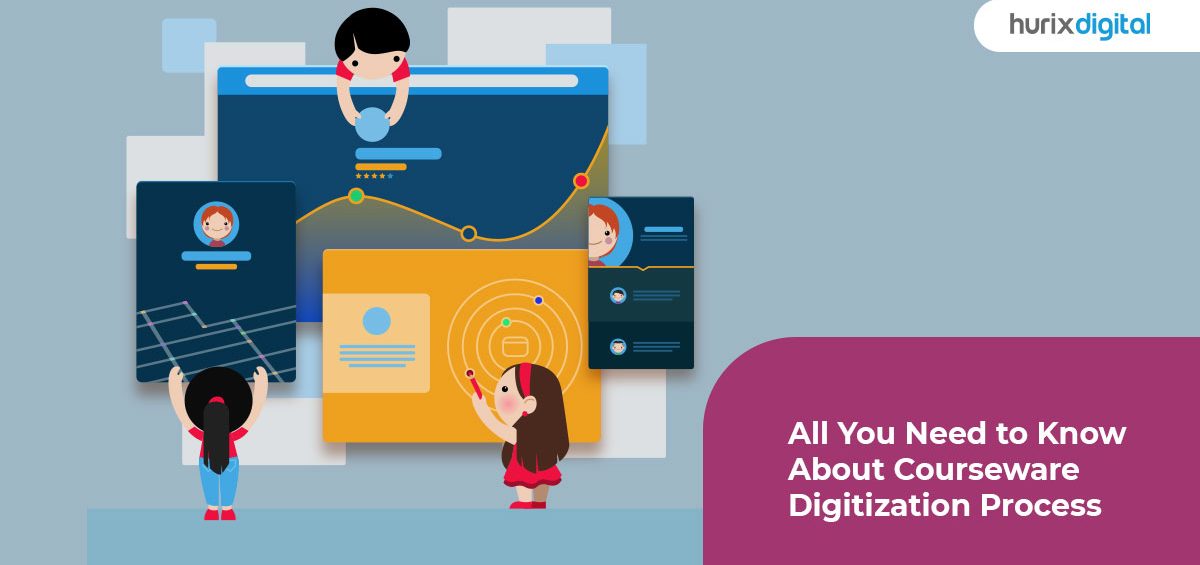We are now living in a highly advanced digital world where the digitization process has become part and parcel of life. The digitization process offers numerous benefits, like improved access, preservation, efficiency, and user experience.
Let us understand this through a simple example.
Do you think libraries will be able to sustain themselves and provide efficient distribution of information if they continue to operate with physical formats like books, manuscripts, and photographs?
Each time a user wants to access the information, they would be expected to visit the library in person. Additionally, these physical formats would also be susceptible to damage, theft, or loss, which could result in the permanent loss of important historical or cultural artifacts.
Today, almost all libraries have digitized their collection, which makes them easily accessible to people all over the world. eBooks, manuscripts, and photographs can be accessed online from anywhere at any time. This has greatly improved access to information for everyone in any part of the world.
Lastly, the digitization process for libraries has also improved the preservation of these materials. Digital copies can be stored in secure servers, which eliminates the risk of physical damage or loss.
Digitization can allow for the creation of multiple copies, which can be stored in different locations for added security.
Now that you know why the digitization process is important let us understand what exactly the digitization process is.
What is Digitization Process?
Digitization can be understood as a process of converting analog information or physical objects into a digital format that can be easily accessed, stored, and controlled using computers and digital technology.
The digitization process involves converting text, images, sound, and video into digital data that can be stored on electronic devices such as hard drives, cloud storage, or other digital media.
What is Courseware?
As more and more learning occurs virtually and all physical resources are digitized, courseware is also becoming increasingly important.
A survey conducted by Pearson Education revealed that approximately 84% of teachers and students believe that the digitization process can solve a lot of modern-day e-learning challenges.
Courseware can be understood as any software or digital material that is designed for educational purposes. It can include a wide range of materials, such as lesson plans, instructional videos, interactive tutorials, and assessments.
Courseware is designed to help instructors and students achieve specific learning objectives by providing them with the tools and resources they require to succeed.
How Can Courseware be Delivered?
Depending on the needs of students and teachers, courseware can be delivered in a variety of ways.
Some of the common delivery methods are discussed below.
Learning Management Systems (LMS)
A learning management system refers a software platform that allows instructors to manage and deliver course content to students. Instructors can use an LMS to create and organize course materials, track student progress, communicate with students, and give them feedback.
The LMS industry is expected to grow to a $30 billion market value by 2025.
Standalone Software
Courseware can also be delivered through standalone software programs that are installed on a computer or mobile device.
These programs include interactive tutorials, simulations, or other multimedia content.
Mobile Apps
With the rise of mobile devices, many courseware providers are now offering mobile apps that allow students to access course materials on the go.
These apps include features like mobile-friendly assessments, interactive games, or social learning tools.
Web-Based Platforms
Courseware can also be delivered through web-based platforms that are accessed through a web browser.
These platforms include interactive videos, online quizzes, or other digital learning materials.
What is Courseware Digitization Process?
Now that you know what courseware and digitization process is separate, it will be easier for you to understand the courseware digitization process.
Courseware digitization can be understood as the process of converting traditional learning materials into a digital format so that they can be delivered through various digital platforms.
Mentioned below are the steps involved in the courseware digitization process.
Step 1: Scanning
Scanning is the first and most important step in the courseware digitization process. It involves scanning the physical documents to create their digital copies.
This is done using specialized scanners that can handle different types of materials, such as text, images, and diagrams.
Step 2: Optical Character Recognition (OCR)
Optical Character Recognition (OCR) software is a technology that enables a computer to recognize and convert text from an image, scanned document, or other types of visual data into editable and searchable text.
Once the documents are scanned, OCR software can be used to convert the scanned images into editable digital text. This makes it easier to search, edit, and format the content in digital format.
Step 3: Formatting
The next step is to format the digital content so that it is optimized for the digital platform it will be delivered on.
For example, courseware may need to be formatted for different screen sizes or mobile devices.
Step 4: Enhancements
The courseware digitization process may involve enhancing the materials with multimedia elements. These include videos, audio recordings, and interactive features.
This can help make the courseware more engaging and effective for learners.
Step 5: Testing
Finally, the courseware is tested to ensure it works correctly and delivers the desired learning outcomes.
This may involve conducting user testing to gather feedback from learners and instructors.
To Wrap Up
If you are also looking to get into the courseware digitization process and convert traditional learning material into digital format, we can help you with it. In the current digital world, the digitization process is important for several reasons, like web accessibility, flexibility, interactivity, personalization, and much more.
With Hurix Digital, our team of experts can help you achieve all your digitization process requirements. Some other services we offer are digital content solutions, digital content transformation, digital engineering, and much more.
We are waiting to hear from you soon!











